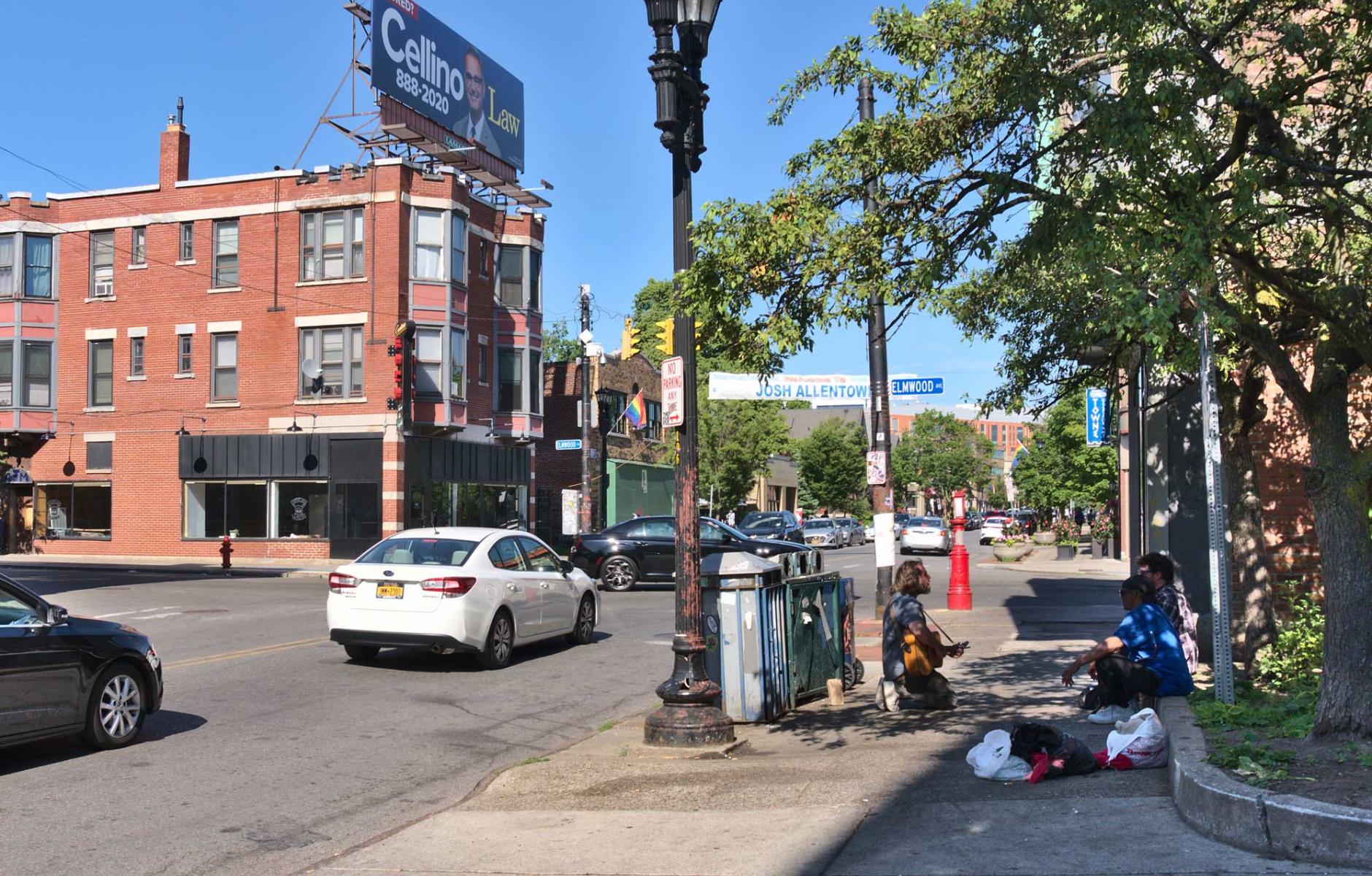
Eight ways for ‘receiver cities’ to prepare
As the world’s climate changes, experts are looking around for places that are likely to receive in-migration of population. A growing number are pointing to the Great Lakes region, from Upstate New York to Minnesota, and its historic cities and towns.
From a climate migration perspective, the region has many advantages. It is not subject to sea level rise or hurricanes, or prone to wildfires or drought—all of the climate-connected disasters that are common in coastal and southerly regions. The region’s most frequent extreme weather events, blizzards, are likely to be mitigated by a warming climate.

“The binational Great Lakes mega-region, which surrounds the largest freshwater in the world and is home to 107 million Americans and Canadians as well as a significant regional economy in North America, will be the destination of choice for many around the world who are seeking refuge from a rapidly changing climate and new economic opportunities,” said Mark Fisher, CEO of the Council of the Great Lakes Region.
A recent book predicts that Michigan will be the “best place to live” by 2050. In another sign of this thinking, some people are moving to Duluth, Minnesota—one of the coldest cities in the Lower 48—for its expected future climate and opportunities.
There are many scenarios for migration related to climate change. Some of them involve much shorter moves—to higher elevations within cities and regions. So Great Lakes communities are just prominent examples of what new urbanists often refer to as “receiver cities, towns, and villages.” They are likely to receive population from front-line cities.
Population loss over the last 70 years, at least in many US northern cities, offers room to grow with surplus infrastructure. Many of these cities also have relatively low property and land costs, allowing for incremental, small-scale development.
If communities are likely to receive climate migration, what can they do to prepare? And how can urban designers and planners help?
- Build more sustainably. Redevelopment based on migration is an opportunity for cities to build more sustainably, and cities should seize that chance. This makes sense from a marketing point of view, because future migrants will care about reducing their carbon footprint. Many will not want to move to a city that is contributing to the overall problem. Cities should focus on enabling future residents to live car-free if they want.
- Focus on the “missing middle.” Existing, walkable neighborhoods can substantially grow their population by allowing missing middle housing types like accessory dwelling units, duplexes, and triplexes. This typically can be accomplished through minor changes to zoning codes.
- Bring downtown back. Most receiver cities lost downtown population and mixed-use buildings to parking lots. Reversing that long-term trend requires vision and changes to regulations. As population returns, so do the businesses and amenities that make cities attractive.
- Convert single-use commercial corridors. Substantial suburban development over decades has created underutilized commercial districts that would benefit from mixed-use transformation in coming decades. Zoning changes and investments in streetscapes would enable that transformation.
- Be competitive. If this trend does materialize over many decades, it’s not likely to happen to every community, simply based on geographic region. There are hundreds of cities in the Great Lakes region, for example. Migrants will choose where to go based on economics, livability, health, and safety. Cities in the region may stay competitive by improving their quality of life—especially creating lively and unique downtowns.
- Tear down unnecessary freeways. Great Lakes cities from Rochester to Milwaukee have benefitted from getting rid of freeways that divided neighborhoods and served little useful purpose. Removing the Inner Loop in Rochester and Park East Freeway in Milwaukee, and converting that land to buildable surface streets and public spaces, has generated hundreds of millions in redevelopment. Many cities have similar opportunities and federal and state dollars are becoming available for this purpose.
- Reform zoning. Reforming typical zoning codes written in the 20th Century will be necessary to accomplish every item on this list.
- Implement a walkability plan. Fossil-fuel-powered automobile traffic was prioritized in the 20th Century through one-way streets, excessively wide lanes, turn lanes, too little pedestrian space, and other design factors. Reversing these changes to create a people-oriented city may be the best investment a city can make to prepare for in-migration.
All of these strategic moves have something in common: They allow for growth while improving the quality of life of existing inhabitants. This is the opposite of what often occurred during the sprawl era, when residents learned to distrust and oppose growth. If cities are to gracefully receive migration, then residents must be confident that new growth will make the community better, notes urban designer Victor Dover of Dover, Kohl & Partners. That’s the opportunity that good design on the community scale offers.




